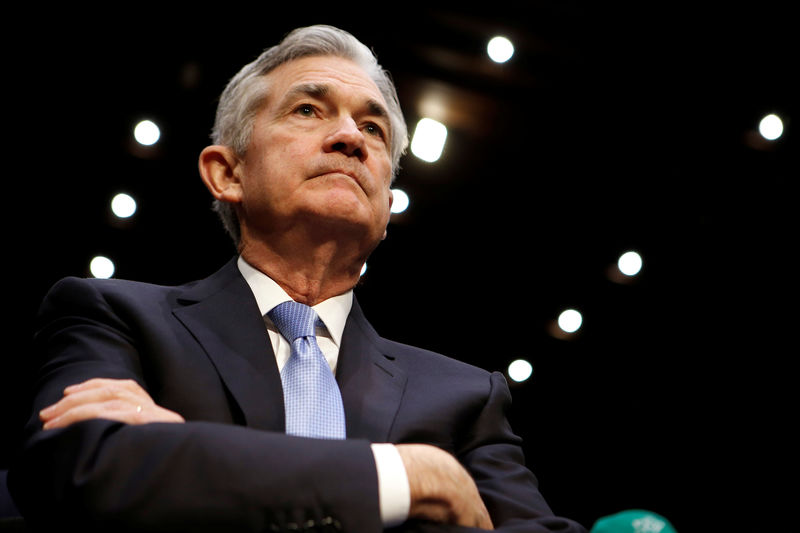
© Reuters.
By Yasin Ebrahim
Investing.com — The post-Federal Reserve rally mid-week on Wall Street was short lived. The sellers returned a day later to carry out a demolition job. Stocks suffered the biggest one-day loss since the pandemic and extended their losing streak to six weeks.
The is down 14% year to date, the is 10%, slumped 23%.
When big selloffs make an appearance on Wall Street, debate about whether the market has bottomed isn’t far behind. But the market still hasn’t reached the “puking out” moment that usually precedes a market bottom and signals it’s safe for the bulls to come out of hiding.
“For downside capitulation, you need to have this ‘puking out’ in the market … that moment when the time comes to buy, but you won’t want to,” Chief Market Strategist David Keller at StockCharts.com told Investing.com in an interview on earlier this week.
This ‘puking out’ moment, a precursor for investor capitulation, has yet to play out as there is still too much optimism and speculative bets sloshing around in the market as well as a lingering hope that the Fed may not be prepared to do whatever it takes to rein in inflation even if that means causing a recession.
“Investors are still too excited about finding a bottom and riding the next leg higher, you need that to completely evaporate … you need people to think the last thing you’d ever want to do is buy stocks” Keller added. “That usually ends up being when the market bottom plays out.”
Identifying a market bottom isn’t an easy endeavor. But history suggests that there are a few key factors that to watch: Price action, market breath, and investor sentiment.
Price action, the movement of a stock’s price over time, has recently shown that optimism is fading as moves higher, or volume, in stocks on up days are lower than that on down days, suggesting that investor conviction to ‘buy the dip’ is fading.
Investor sentiment on stocks, meanwhile, has rebounded after hitting an all-time low last week, but remains below the historical average, according to the latest AAII Sentiment Survey, published on Thursday.
“Bullish sentiment, expectations that stock prices will rise over the next months, jumped by 10.4% to 26.9% last week,” AAII Sentiment Survey showed. But the big move wasn’t enough to prevent optimism from remaining below its historical average of 38% for the 24th consecutive week.
While price action and sentiment show that stocks are on the road to reaching a short-term bottom, market breadth, the movement of individual stocks that make up the index, continues to flag more speed bumps ahead.
In a bearish market backdrop, the market breadth tends to be negative, with more stocks declining than advancing. This negative scenario is exacerbated when markets are in the bottoming out phase, as a ‘sell everything’ mentally usually proceeds. But there are still corners of the market holding up well, suggesting sellers aren’t ready to surrender.
“The challenge right now is you really haven’t seen a complete bombed out market breath scenario, where everything has gone down, there’s still things that are actually holding up pretty well like energy stocks,” Keller said.
“This also looks a lot like earlier in a cyclical bear market where the negative breath that all of a sudden acknowledges that people are in the acceptance phase and recognizing that the markets really are deteriorating,” Keller added. “In 2008 and 2009, markets went down for another six to nine months before the eventual bottom and stocks.”
Investor confidence in the Fed’s ability to curb inflation without tipping the economy into a recession will also play a role in market bottom out process.
“The idea that the Fed can manage inflation and raise rates in a consistent way without having negative impact has started to shake. When the confidence in the Feds ability to manage through this is low, that is not a bull market environment,” Keller said.
Others on Wall Street agree, though also point out that the risk to reward opportunity in stocks are beginning to look attractive as some of the recession risk is being baked into stock prices.
“I think it’s [market bottom] entirely dependent on whether the economy goes into recession or not, Chief Strategist at Spouting Rock Asset Management Rhys Williams told Investing.com in an interview on Thursday.
“The risk to reward is attractive because there seems to be increased consensus that some sort of hard landing, or recession is impossible to avoid. If it is avoided, there’ll be a lot of upside, but if it isn’t avoided, some of this [recession risk] is priced in,” Williams added.


Be the first to comment